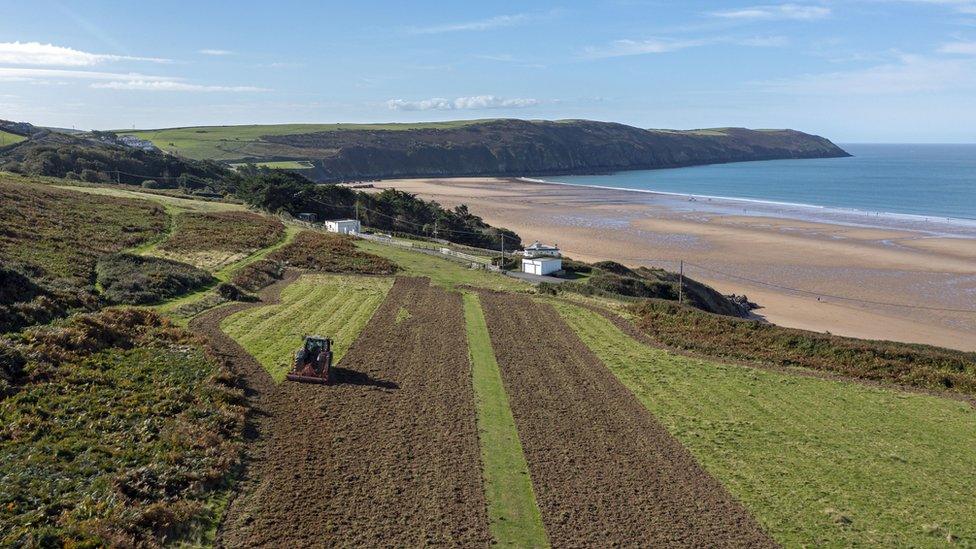UK's largest wildflower grassland is being planted
- Published
- comments

North Devon is set to be home to the largest ever wildflower grassland in the UK.
It's part of a project from the National Trust which hopes to boost biodiversity in the area.
Biodiversity is the range of animals, plants and microorganisms in a given area. It is the foundation that supports all life and each member plays an important role.
1.3 tonnes of seeds have already been sown across 86 hectares of land - that's about the weight of a polar bear in seeds planted across 120 football pitches!
A hectare is a unit of area equal to a square with 100m sides and its area is 10,000 square meters
The first grasslands will be left to grow and flourish over the next couple of years, before it'll then be used as a donor site for seeds to sow elsewhere
The seeds that have already been planted will act as a donor site over the next eight years - so the seeds for the rest of the project will be taken from there and planted elsewhere.
By 2030, 70 miles of the north Devon landscape will be filled with wildflowers thanks to the project.
Over the past 100 years, we've lost most of the grassland which used to be filled with native plant species.
There's only 1% remaining today which is why this project is so important - not to mention the huge impact it has on our pollinators like bumblebees.
The seeds have been sown using a combination of two different methods - hand sowing and seed broadcasting (like you can see here)
Joshua Day's the project co-ordinator from the National Trust. He said "lowland grassland creation is a very effective and relatively quick way to improve habitats for wildlife and boost biodiversity.
"For the best chance of success, it's vital to sow the right types of plants in the right places.
"This will ensure we grow the right complementary wildflowers for the area which will help wildlife that already lives there, as well as attracting new species."
The creation of the new grassland habitats will help towards its ambition to create 25,000 hectares of priority habitat by 2025.
- Published11 October 2021
- Published25 August 2022
- Published21 January 2022
